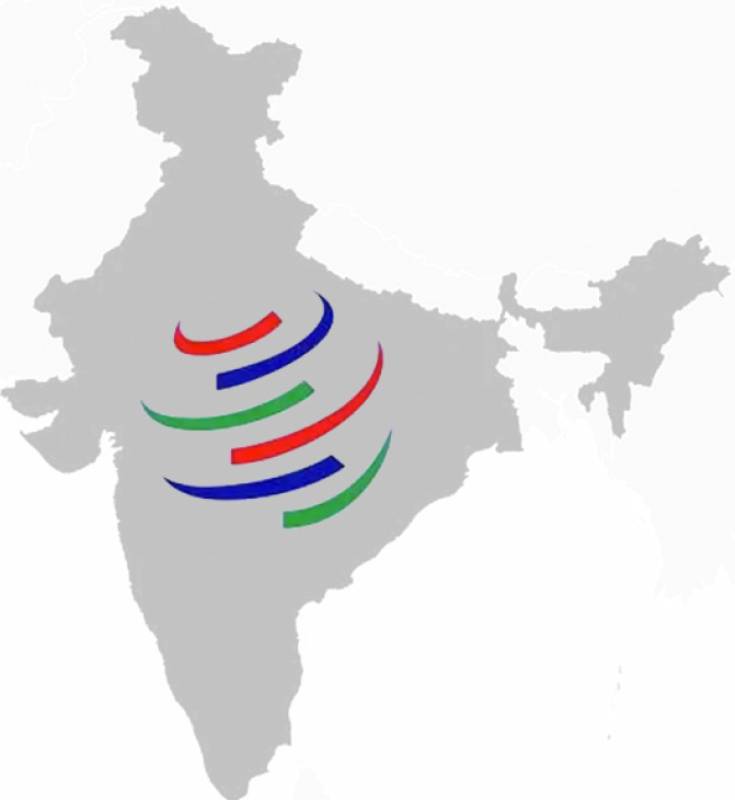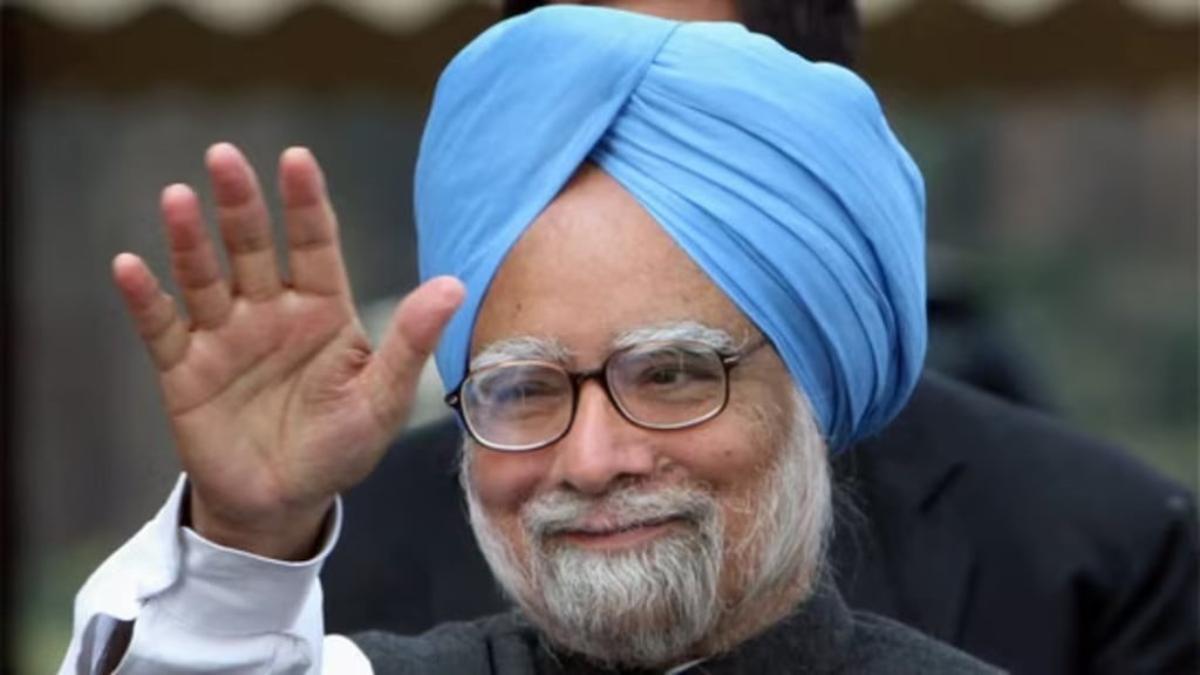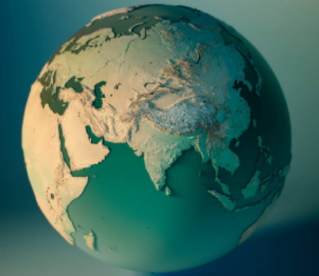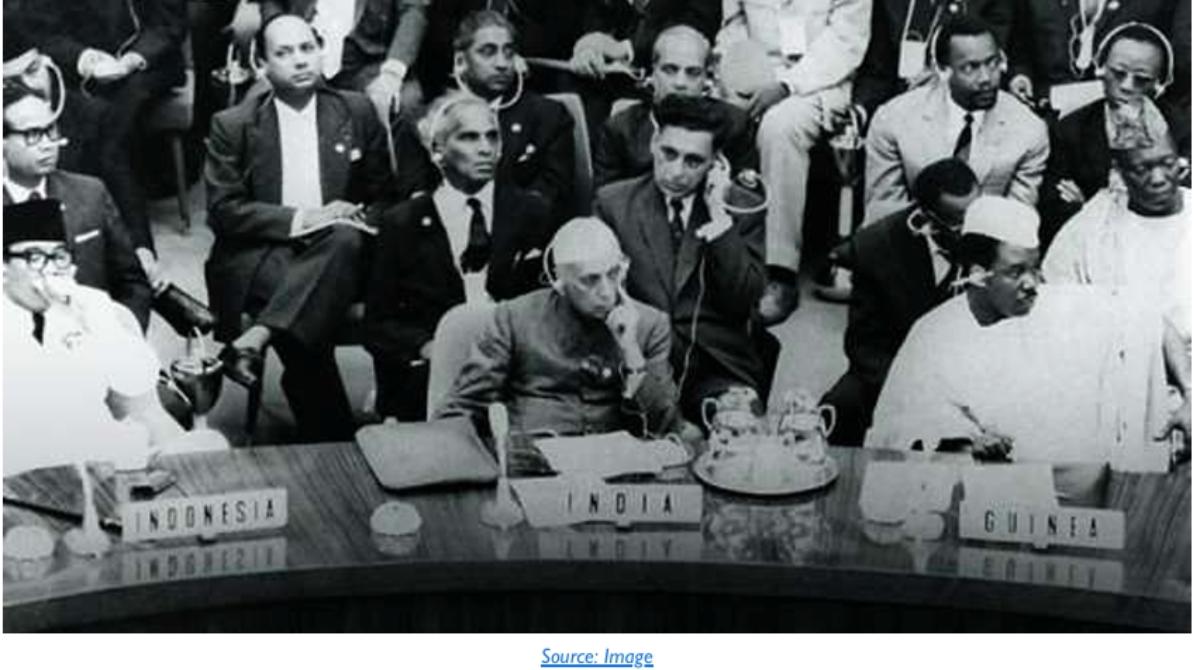The present article begins with an introduction to the WTO, its formation and significance today. The article further addresses a number of salient issues, including: WTO system and developing countries, major issues of concern from the perspective of developing countries like India, to study the economic environment- foreign trade policy which includes opportunities for growth and challenges ahead for India at WTO, regional trade agreements, high time for India to revise the trade policy, India facing chal-lenges in the areas of trade policy, India’s targets and focus. Then it dwells on what strategies India needs to adopt for safeguarding its interest in WTO. It provides us an understanding of the complex issues pertaining to the WTO, its agreements and negotiations, and analyses of the impact of the WTO- on the Indian economy.
The strategies to be devised to safeguard India interest includes: creating global partnership with India’s major trading partners like United States, active participation in the Regional Comprehensive Economic Partnership, to join the Asia-Pacific Economic Cooperation, reviving its Multilateral Trading System, In-dia could further increase its exports by participating in the major Plurilateral Negotiations on services, environmental goods, and government procurement now taking place at the WTO, participation in Transatlantic Trade And Investment Partnership and Trans-Pacific Partnership, India should move WTO against Protectionist Tendencies of countries hurting its interests (Trade war between US-China), India’s stance on Trade Facilitation, agriculture, e-commerce etc., permanent solution for Agricultural ‘Conun-drum’ at WTO, modeling on Investment/Trade facilitation, freeing e-commerce, India’s suggestion on WTO reforms and charting a road map for India at WTO.
India’s has keen interest in multilateral forums like the WTO and how best India could utilize this forum to realize maximum advantage, whether India has a clear cut and well-defined set of negotiating strate-gies as discussed and its dispute settlement mechanism, how the reforms in WTO has effected India since its inception in 1995, whether these reform shares India’s long-term economic interests, whether the benefits from the WTO-induced reforms are fairly and evenly distributed across the regions and across the population to decrease income inequality and poverty in India. I am hopeful that the pre-sent work will contribute towards the understanding of the WTO and India’s strategies safeguarding its interest in an environment of World economic events with WTO induced reforms.1
Introduction to the WTO
The birth of WTO relates back to the set of negotiations, and everything the WTO formed of and does is the result of negotiations. The WTO’s present structure and working comes from the negotiations of 1986–94 also called as the Uruguay Round and earlier negotiations under the General Agreement on Tariffs and Trade (GATT). The WTO held negotiations under the ‘Doha Development Agenda’ launched in 2001 forming the pillar of future WTO. The negotiations at WTO has helped the WTO to act as body facilitating trade with equity among the countries which faced trade barriers and wanted to lowered these barriers, these negotiations have opened the markets for a just and transparent trade and trad-ing system. The WTO agreements negotiated and signed by the bulk of countries are called as trading nations. These negotiations and documents provide the legal rules for international commerce.
The system’s overriding purpose is to help trade flow in the world as freely as possible —and the basic rules of conduct of trade have to be ‘transparent’ and predictable. World Trade relations often involve conflicting interests of countries. The most harmonious way to settle these differences is through the dispute settlement process written into the WTO agreements.2
What the WTO Does
The World Trade Organization (WTO) replaced the General Agreement on Trade and Transfer (GATT), coming into effect on 1st January, 1995 with the support of 85 founding members including India. To-day WTO stands as the third economic pillar of worldwide along with the World Bank and International Monetary Fund (IMF). Like GATT, the WTO agreement regulates the trade of commodities, and in addi-tion it also deal with services across borders like insurance and tourism. The new WTO agreement also protects intellectual property like patents, copyrights and trademarks (brands). Agriculture and textiles are fully covered by the WTO agreement. The Ministerial Conference (MC) is the highest WTO body which meets at least once in two years.
WTO is an engine of international trade driven by its member states. It has a Secretariat to conduct its functions and coordinate its activities. The WTO focuses upon Trade negotiations, Implementation and monitoring, Dispute settlement, Building trade capacity and Outreach for a safer trade order. The WTO also maintains continues dialogue with various bodies and forums such as non-governmental organiza-tions, parliamentarians, other international organizations, the media and the general public on various aspects of the WTO negotiations, with the aim of enhancing cooperation and increasing awareness of WTO activities.
- Administering WTO trade agreements
- Monitoring national trade policies
- Cooperation with other international organizations
- Technical assistance and training for developing countries
- Settle Disputes and reduce Trade Tensions
- Forum for trade negotiations
The World Trade Organization (WTO) was formed on January 1, 1995 with a promise for the entire world economy in respect of international trade and global economic cooperation. It signifies “Devel-opment through Trade”.3 In the words of Peter Sutherland, the first Director General of WTO: “The WTO binds nations in a global co-operative endeavor to raise incomes and create good jobs through fair and open trade”.
Objectives and Scope of the WTO
- The first and foremost aim of WTO is to implement the new world trade system as envisaged in the visionary Agreement.
- To promote World Trade in a manner benefiting each and every country.
- To ensure a better balance for developing countries in sharing the advantages resulting from the expansion of international trade corresponding to their developmental needs.
- To demolish all hurdles to an open world trading system and usher in international economic renaissance as an effective instrument to foster economic growth.
- To enhance competitiveness among all trading partners so as to benefit consumers and help in global integration.
- To increase the level of production and productivity with a view to ensuring level of employ-ment in the world.
- To expand and utilize world resources to the best.
- To improve the level of living for the world population and accelerate economic development of the member countries.
WTO has a much wider and deep seated scope than GATT as new important areas are included in the agreement i.e. Agriculture- a controversial area and other areas having implication for the production process of goods have also been included. The new areas are:
- Trade Related Aspects of Intellectual Property Rights (TRIPS)
- Trade Related Investment Measures (TRIMS)
- General Agreement in Trade in Services (GATS)
The WTO has adopted the decision-making process of the GATT. In the absence of any objection from any member state the decision based upon consensus is final. Voting can be resorted to, if no decision can be arrived at through consensus. The decisions taken by the majority of votes cast on the basis of one country one vote but have a wider acceptance.4
The Major Issues of Concern for Developing Countries
The divide has widened between the developed and developing countries over the period of time lead-ing to deadlocks in the process of multilateral negotiations. The developing countries form a much big-ger group under the WTO regime but the decision making is influenced by the developed countries. This has triggered conflict of interests among member countries leading to widespread demonstrations around the world. The objective of WTO framework is liberalizing of trade in goods and services and protection of intellectual property. The countries which are supply driven directly benefit from exports expansion, whereas the countries with intellectual property directly benefit from monopoly privileges including high financial returns to IPR owners. The developing countries neither have good supply base for goods and neither services nor much of IPRs in their name therefore they suffer direct from the WTO as compared to developed countries.
The basic principles of the multilateral framework, such as national treatment, i.e., non-discrimination between imported and domestic goods, works against the process of development by discouraging domestic production by developing countries. Retaliation is the last resort left for enforcement of rights of the member countries. Since developing countries are weak and retaliation by them against any developed country has both economic and political costs, they are at a considerably disadvanta-geous position in their capacity to enforce rights and obligations.
Developed countries influence the decision-making process as they possess enormous resources to make elaborate preparations for the negotiating process. The issues of their interest take centre stage leading to frustration among developing countries. In WTO substantial negotiations are carried out in small groups in the absence of developing countries. Countries who have not participated are expected to agree when the results are brought forth in larger groups. Decision-making at this stage cannot stop and any such move by developing countries would mark them as obstructionists and have political re-percussions.
Developed countries always take advantage of escape routes and loopholes in the agreements. For in-stance, the Agreement on Textiles was back-loaded and left the choice of products to the importing countries. Developed countries have been imposing restraints; they chose selective products for liber-alization that were not under import restraints without liberalizing their textile imports until 2004.Similarly developed countries could reduce subsidies in agriculture despite actually increasing quantum of subsidy.
Developing countries see WTO as an institutional framework to extract concessions and obstructing their goals of development and self-reliance. Despite vast differences among the interests of member countries, the WTO remains the only international organization that provides a multilateral framework for international trade.
Apart from dealing in trade in goods, WTO covers a number of issues related to international trade, such as services, intellectual property rights, anti-dumping, safeguards, non-tariff barriers, dispute set-tlement, etc., making it comprehensive.
India’s Foreign Trade Policy
India’s Foreign Trade Policy (FTP) consists of schemes to provide the basic framework of policy and strategy for promoting exports and trade and to support the domestic exporting community. It fur-ther helps to set-up special trade and economic zones in different parts of the country.
In a very good example to understand where US filed a complaint against India at the WTO claiming violations of WTO obligations. US alleged that export promotion schemes of India are inconsistent with WTO rules prohibiting the export subsidies. The legal basis for the challenge was the provisions on Sub-sidies and Countervailing Measures (SCM Agreement) which, monitor subsidies, including exports. The WTO panel was established to examine and adjudicate the complaint. It was concluded that certain benefits arising out of India’s export promotion schemes violate India’s obligations to not maintain ex-port subsidies.
This decision may impact India trade and business but the schemes challenged have always supported Indian exports and have provided incentives reducing the cost of exports and helped India in devising export strategies exploring new markets. The US-China trade wars including European countries etc. have bring uncertainties for businesses globally including in India.
Focus of India’s Trade Policy
India’s Foreign Trade Policy targets as announced in 2017 were:
- To increase India’s share of global trade from the current 2.1 percent to 3.5 percent.
- To double its exports to $900 billion.
- The set targets can be achieved by overcoming the challenges and obstacles such as:
- Lack of knowledge and understanding of trade policy and its potential benefits
- A poorly developed manufacturing sector,
- Unsatisfactory results from regional trade agreements,
- Constrained relationships with trading partners.
- Economic reforms in trade policy for an open, competitive, and technologically innovative In-dian economy.
The government of India shall focus upon manufacturing sector to increase the Gross Domestic Prod-uct through efficient and effective implementation of government schemes and policies focusing upon:
- Export Promotion
- Gains in efficiency
- Changing Trade Profile
- Provision for small and poor investors especially farmers
- More agricultural subsidies
- Promote equality of competition
- Appropriate patenting of living organism.
- Skill Development
- Innovation
It is highly important for India to work in collaboration with U.S. capital and innovation needs together with Indian resources and entrepreneurship for wider global trade partnership.5
India and Regional Trade Agreements
To have free and efficient trade its very much imperative to have successful regional trade with the neighboring countries and same can be achieved by agreeing on the terms and condition for the trad-ing in regional setup. ASEAN members and countries like China, Japan, Korea, Australia and New Zealand including India give shape to Regional Comprehensive Economic Partnership Agreement (RCEP). RCEP aimed to be the world’s largest free-trade agreement though India opted out in Nov 2019. The agree-ment have combined GDP of US$49.5 trillion covering 39% of the global GDP, RCEP would cover nearly 3.4 billion people worldwide.
There are some unresolved issues of India till starting of Thailand summit held from 2-4 November 2019. India informed its intention to walk-out of the negotiations if its concerns are not addressed in a satisfactory manner. RCEP’s joint leaders expressed their concern for India in a joint statement on 4 November 2019 and mentioned that all the participating countries will work jointly together to resolve India’s issues in a mutually acceptable way. India’s final decision to sign up or otherwise to the RCEP Agreement will depend on the outcome of the discussions to be now undertaken with the other par-ticipating countries.6
In Indian context, the agreement poses its own challenges and currently India has a goods trade deficit of US$104 billion with 10 out of the 15 RCEP partners. India is concerned with the competition offered by the China products once the agreement is signed. So the only emergency safeguard available to In-dia is to develop its exports in services trade. The developed RCEP countries have been unwilling to ne-gotiate in services that can create new market access for trade in services.
India Faces Significant Challenges in the Area of Trade Policy
India has been facing problem in the growth of trade due to various challenges with the trade policy. If India wants to grow and expand in its trading system, it needs to overcome significant trade policy chal-lenges such as:
- Global Economic Slowdown,
- Increasing Trade Protectionism,
- Revive stalled mega-trade deals within time,
- Government and industry especially the manufacturing sector engagement
- Global/sectoral standards supporting the World Trade Organization (WTO).
Today the United States is the world largest economy and world leader in influencing trade. The United States will impact and set standards to form the world Trade policy. But the US-China trade war has make it more competitive for the United States to achieve its trade objectives. United States needs to reshape its trading policies in the latest trade developing environment and global order. India should work effectively and efficiently to create space for itself to be leader at WTO in the absence of trade ini-tiatives by United States or China etc. India shall take advantage of practices and trade reforms wisely in enterprising manner to showcase its might in the WTO trading mechanism and system.
Strategies to Safeguard India’s Interests
Enhance Ties with India’s Major Trading Partners
In present scenario trade will flourish with cooperation and global partnership among the member countries. The strong bilateral relationship between countries like India and United States lies in their core interest to enhance economic activity and trade. This can be reflected in the joint statements of the two governments: “In order to substantially increase bilateral trade, they pledged to explore new opportunities to break down barriers to the movement of goods and services, and support deeper integration into global supply chains, thereby creating jobs and generating prosperity in both econ-omies”.
But these announcements and statements cannot translate into meaningful cooperation and bilateral engagements unless and until the same materialize into reality and emerges as India’s strong voice into the world of trade negotiations. The strategic convergence of the two countries does not reach down to the trade segment due to adversarial challenges. United States has been the engine of growth in trade negotiations and has been pushing for aggressive trade liberalization, focusing upon opening of markets, and mega-trading blocs based on WTO mechanism.
These two countries must work collectively with the other member nations of WTO to break the barri-ers for free flow of trade and movement of goods and services for the integrated market and supply chain across the world on WTO standard. India’s Stance on Trade Facilitation, Agriculture, E-Commerce Etc.
India should exercise its right as a sovereign nation and WTO formation member to complaint and raise voice at WTO against Protectionist Tendencies of countries jeopardizing the very interests of India. In-dia should raise its objection with the WTO and its forum like dispute settlement body along with other developing countries on trade negotiations and specially core and sensitive issues like agriculture, subsi-dy in food security etc.7
India is known for its agricultural and has been pushing agricultural issues at the WTO. The issue raised at WTO is of public stock holding including purchasing, stockpiling and distributing food by Govern-ments in times of necessity and this step of the government of India is very important for India’s food security. India has complied the guidelines and norms of WTO for stockpiling and distributing the agri-cultural products. WTO considers the purchasing of food by the governments at a price higher than the market price to be of trade distorting subsidy.
The 11th Ministerial Conference held at Buenos Aires in 2017 did not come out with any permanent solution to the issue of public stock holding. India has voted for permanent solution to the issue of stock holding. The issue raised here in the context of India is as to how the Minimum Support Price (MSP) is fixed.
Investment/Trade Facilitation
India has its own model investment code and as per the code India does not allow multinational com-panies or corporations to sue the government to international courts until and unless they exhausted its local remedy at national level through its domestic dispute settlement bodies for five years. This has been done because on earlier occasions the Government of India has been taken to international arbi-tration courts. WTO panel has allowed India to reshape its trade development and promotion such as through developing special economic zones (SEZ) to meet its developmental objectives. To take inputs from businesses and other stakeholders and to systemize its domestic regulators to help India firm keeping high its negotiating position and update its trade policy for the contemporary economic reali-ties.8
Freeing E-Commerce
One of the most important areas identified for discussion at the 11th Ministerial Conference of the WTO was e-commerce. India has raised its objection freeing of e-commerce. India felt that digital pene-tration by India is successful and has remain in adequate. India also feels that Micro, Small and Medium Enterprises (MSMEs) will fail to compete with other countries in deeper internet penetration, who can gain better access to international markets. India wants the 1998 agenda to make rules and regulation to govern E-commerce.
Global vs Regional Trade Agreements
India needs to examine its current regional and global trade policies for a strong economic, strategic and vibrant trade and compare its trade policy comprehensively, keeping in view the India’s investment patterns and industrial policies in mind framing new trade policy.
Regional Comprehensive Economic Partnership
RCEP was launched in Cambodia on December 20, 2012, as on Free Trade Agreement (FTA) between ASEAN countries and its FTA partners such as Australia, Brunei, China, Cambodia, India, Indonesia, Japan, the Republic of Korea, Laos, Myanmar, Malaysia, New Zealand, the Philippines, Singapore, Thailand, and Vietnam. As per reports and data available, these sixteen countries is equal to world’s half population, covers 30 percent of global GDP, and 25 percent of world exports. RCEP has inspired the countries for a global and trustworthy partnership and encourages achieving a comprehensive and mutually benefi-cial economic partnership agreement covering trade in goods, services, economic and technical coop-eration, competition, investment, intellectual property, and dispute settlement. India plays important role in participating with RCEP negotiations but with caution. There are many good and valid reasons as to why India should participate in RCEP:
- Environmental and labor standards are not big issues in this agreement.
- India gets excellent opportunity to negotiate with China, which cannot be done bilaterally.
- India would recalibrate the demands of its professionals, for a positive and affirmative response from RECP partners.
- India could include some common objectives on environment and nontariff barriers.
Having decided to not join the RCEP, India should focus upon the learning and experience gained from the RCEP negotiations while working on other free-trade agreements. In this regard the Government of India has taken proactive steps such as:
- A new WTO compatible export support scheme
- Remission of Duties or Taxes on Export Products (RoDTEP)
- To replace the primary export incentive scheme that has been declared ultra vires by the WTO dispute panel.
- Careful drafting by government policy makers to show compliance with WTO-rules,
- Industry/experts to provide details/peculiarities of their sector to the government.
Asia-Pacific Economic Cooperation
Just as India chose not to participate in the RCEP, it has also not a member of the Asia Pacific Economic Forum (APEC) is a forum for twenty-one member economies and aims to promote free trade through-out the Asia Pacific region. It is good and ideal time for India to participate in APEC and take its mem-bership for the benefits and promote a healthy trade- economic environment among APEC members.
The benefits India would enjoy acquiring membership in APEC:
- “Greater access to foreign markets, sources for investment, and value chains to improve manu-facturing industries and create jobs in home country,” with its Government’s development programs.
- Prepare new leadership, entrepreneurs and businesses for the transformed economy of the world.9
Conclusion
India and the United States are the founding member of GATT in 1947. The agreement’s preamble stands valid even today for the purpose of trade policy. The first two paragraphs focus goals of “raising standards of living, ensuring full employment, and steadily growth of real income.” The second para-graph focus on modalities for achieving them, including “reciprocal and mutually advantageous ar-rangements to reduce tariffs and other barriers to trade and to the elimination of discriminatory treatment in international commerce.”
India chose to accede to only some of the agreements. India found comforts in MFN trade, and have faith in it—the scheme which extends concessions and preferences on a unilateral basis are its excep-tions. India participated in the scheme so long as it is benefitted. India has always protested the scheme, if India has been subjected to conditions.
India is encouraged to take good decision based on India’s national interests on all trade related is-sues. India needs to have a vibrant and coherent trade policy with full proof strategy to transform India into world economy. India is also focused and exploring much better ways to streamline and priorities its global trade. India has been rapidly growing for many years and India will remain the fastest growing economy for the next years ahead. India supports WTO’s ‘one nation one vote’ system than avoiding talks.10
India has been very vocal WTO Secretariat’s participation in the report ‘Reinvigorating Trade and Inclu-sive Growth’ which was brought by the World Bank and IMF. The report has created doubts on the efficiency and efficacy of trade talks involving all member countries. The report has suggested plurilat-eral instead of multilateral trade talks which was against the trading interest of India. India supported that institutional reforms of the WTO should be given in the hands of members and not to the WTO Secretariat. India highlighted the increasing trade disputes and the shrinking Appellate tribunal, which affects dispute resolution.11
WTO cannot be changed overnight and it will take time. To change WTO it need to solve the tension between two world giant economies, the US & China and adopt a clear strategic direction to help the WTO in its grey areas. Change requires commitment, will power and common consensus on the part of the major economies of the world, represented by the G20, and deeper engagement with China and the United States as positive step ahead. The World Economic Forum (WEF) Meeting in 2019 was held under tough times for WTO and global trade. To control over a Western-centric organization is the bat-tle to be fought by WTO. The time has come for the emerging economies and the developing world to have a better voice and strength to shape multilateralism and its institutions’.
WTO to work as an institution par excellence needs its own independence and transparency with democratic functioning free from any rigidity or bias against any country or group of countries only focusing upon its principles and values it stands for. Negotiations are the only solutions available for any country even if cumbersome, painstaking and incremental they are. WTO is a referee as an institution and always strives to become better and more effective referee. It is very surprising that WTO could not achieve much due to pressure, politics, competition, hegemony, calls for protectionism etc. but its im-age as a referee has always led the way forward for the world trade. WTO should focus upon the com-mon problem of the member countries and make consensus on issues among the nations to pave the path for a hassle free and sustainable world trading system. This is the time for India to reform its trade policies and practices in order to gain from the decisions and agreements of the world institutions WTO.
Apart from strengthening its position in the WTO through the series of steps suggested in this article, India should continue to study the effect of its decisions not to join the RCEP and the APEC, respective-ly, on both trade and investment. If indeed the effects are
adverse, it would be appropriate to recon-sider the decision to stay out of these major regional groupings. As Prof Anita Inder Singh said12, “[In-dia’s] absence from the Regional Comprehensive Economic Partnership (RCEP), which will be the world’s largest free trade area, raises questions about its role in Asia.”
We have to take a view whether being Atma Nirbhar means being a closed economy or dealing with the world from economic strength, which can only come if we open ourselves and learn to handle global completion both domestically and abroad.
Footnotes:
1. India and the WTO: Issues and Negotiating Strategies (Description and Table of Contents) By Alokesh Barua and Robert M. Stern, Source: https://ideas.repec.org/p/mie/wpaper/604.html
2. UNDERSTANDING THE WTO- https://www.wto.org/english/tratop_e/dda_e/dda_e.htm
3. WTO AT TEN: Book by Bibek Debroy and Mohammed Sadib
4. The World Trade Organization (WTO): A Close View(Article Shared by Sanket Suman )
5 India’s Trade Policy Dilemma and the Role of Domestic reform By Hardeep S. Puri (February 16, 2017) Source: Getty, avail-able on https://carnegieindia.org/2017/02/16/ india-s-trade-policy-dilemma-and-role-of-domestic-reform-pub-67946.
6 Strategies of India to protect its Interest at WTO by Agneshwar Sen, Associate partner, Tax and Economic Policy (Interna-tional Trade), EY India. (Also For all documents related to this dispute, see (a): DS541 – India – Export related Measures, avail-able here (accessed on 8 November,2019). See (b): The Economic Times, Is India ready for RCEP embrace? (29 October 2019) and See (c) Joint leaders’ statement on RCEP, available here (accessed on 8 November 2019)
7 India’s Stance on WTO Reform by Shri S. K. Ashok Warrier, former Ambassador of India to the Democratic Republic of Con-go, Source: https://ged-project.de/trade-andinvestment/ indias-stance-on-wto-reform/
8 Strategies of India to protect its Interest at WTO by Agneshwar Sen, Associate partner, Tax and Economic Policy (Interna-tional Trade), EY India. (Also For all documents related to this dispute, see (a): DS541 – India – Export related Measures, avail-able here (accessed on 8 November,2019). See (b): The Economic Times, Is India ready for RCEP embrace? (29 October 2019) and See (c) Joint leaders’ statement on RCEP, available here (accessed on 8 November 2019)
9 3.1-3.5-India’s Trade Policy Dilemma and the Role of Domestic reform By Hardeep S. Puri (February 16, 2017) Source: Get-ty, available on https://carnegieindia. org/2017/02/16/india-s-trade-policy-dilemma-and-role-of-domestic-reform-pub-67946
10 India’s Trade Policy Dilemma and the Role of Domestic reform By Hardeep S. Puri (February 16, 2017) Source: Getty, avail-able on https://carnegieindia.org/2017/02/16/ india-s-trade-policy-dilemma-and-role-of-domestic-reform-pub-67946
11 3.12-3.14, India’s Stance on WTO Reform by Shri S. K. Ashok Warrier, former Ambassador of India to the Democratic Re-public of Congo, Source: https://ged-project.de/ trade-and-investment/indias-stance-on-wto-reform/
12 https://timesofindia.indiatimes.com/blogs/toi-edit-page/post-rcep-where-does-india-stand-indias-absence-from-southeast-and-east-asian-economic-progress-could-beisolating/








